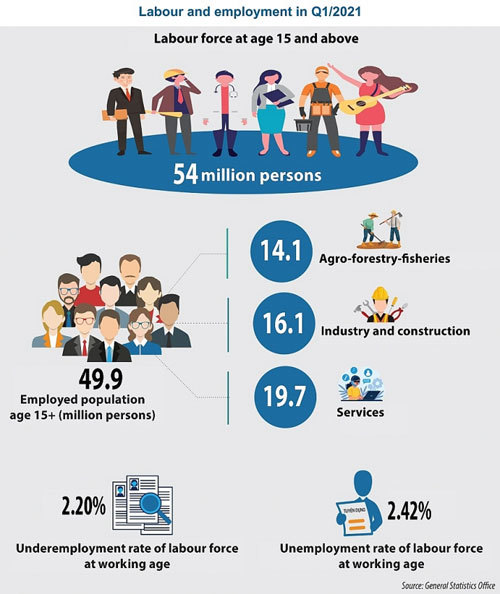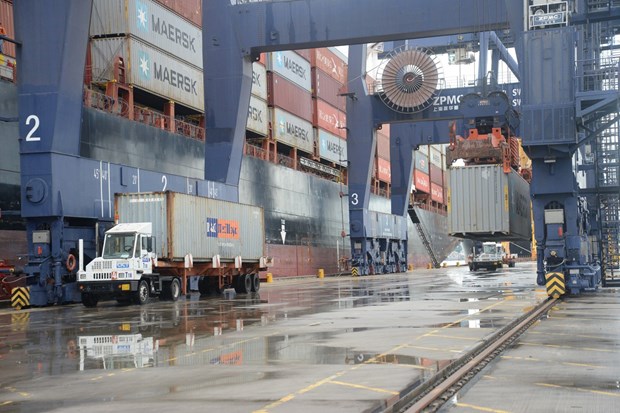
The labor market plays a crucial role in shaping the economy of any country, and Vietnam is no exception. As one of the fastest-growing economies in Southeast Asia, Vietnam has witnessed significant changes in its labor market over the years. This article provides an overview of the labor market in Vietnam, highlighting key challenges, government initiatives, job opportunities, and emerging trends.
I. Introduction
The labor market in Vietnam encompasses the interactions between job seekers and employers, facilitating the allocation of human resources across various sectors. With a population of over 96 million people and a growing economy, the labor market in Vietnam is dynamic and diverse. Understanding its intricacies is essential for policymakers, businesses, and individuals seeking employment opportunities.
II. Economic Overview of Vietnam
Vietnam has experienced remarkable economic growth over the past few decades. The country’s gross domestic product (GDP) has consistently expanded, driven by a combination of factors such as robust manufacturing, foreign direct investment, and a young workforce. Key sectors driving Vietnam’s economy include manufacturing, services, agriculture, and information technology.
Employment trends in Vietnam have also undergone significant changes. The country has seen a shift from predominantly agricultural employment to a more diversified labor force, with increasing numbers of workers employed in manufacturing, construction, and services sectors.
III. Labor Market Challenges in Vietnam
Despite its economic progress, Vietnam faces several challenges in its labor market. These challenges include:
A. Skills gap
There is a mismatch between the skills possessed by job seekers and the skills demanded by employers. Many graduates lack the practical skills required for specific industries, leading to high rates of unemployment among young people.
B. Informal labor market
A significant proportion of the workforce in Vietnam is engaged in informal employment, characterized by low wages, limited social protection, and lack of job security. The informal labor market poses challenges in terms of ensuring decent work conditions and adequate social welfare.
C. Wage disparities
Wage disparities exist across different sectors and regions in Vietnam. Workers in urban areas and those employed in higher-skilled industries tend to earn higher wages compared to their rural counterparts and workers in low-skilled jobs.
D. Gender inequality
Gender inequality remains a concern in the labor market, with women facing barriers in accessing equal employment opportunities, career advancement, and equal pay for equal work.
E. Labor regulations
The labor market in Vietnam is governed by various regulations, including minimum wage laws, working hour limits, and social security provisions. However, ensuring compliance with these regulations and protecting workers’ rights remains a challenge.
IV. Government Initiatives and Reforms
The Vietnamese government has implemented several initiatives and reforms to address the challenges faced by the labor market. These include:
A. Education and vocational training programs
To bridge the skills gap, the government has focused on improving the quality of education and promoting vocational training programs. Efforts are being made to align the curriculum with the needs of the labor market and enhance practical skills development.
B. Foreign investment policies
Vietnam has adopted policies to attract foreign direct investment, particularly in high-tech industries. These investments create job opportunities and contribute to technological advancements, thereby benefiting the labor market.
C. Labor law reforms
Reforms in labor laws aim to improve worker protection, promote fair employment practices, and strengthen labor unions. These reforms include measures to regulate working hours, overtime compensation, and workplace safety standards.
D. Efforts to bridge the gender gap
The government has been actively promoting gender equality in the labor market through various policies and programs. Efforts include raising awareness, providing training opportunities, and encouraging businesses to adopt gender-responsive practices.
V. Job Opportunities and Key Industries
Vietnam offers diverse job opportunities across various industries. Some of the key industries with significant employment potential include:
A. Manufacturing and export-oriented industries
Vietnam’s manufacturing sector, especially electronics, textiles, and garments, has experienced significant growth. The country has become an attractive destination for foreign investors due to its low labor costs and favorable business environment.
B. Information technology and software development
Vietnam has emerged as a hub for information technology and software development outsourcing. The country’s tech-savvy workforce and competitive labor costs have attracted global companies seeking to outsource their IT services.
C. Tourism and hospitality
Vietnam’s natural beauty, cultural heritage, and vibrant cities have positioned it as a popular tourist destination. The tourism and hospitality industry offers employment opportunities in hotels, restaurants, tour agencies, and related services.
D. Agriculture and seafood processing
Agriculture remains a significant sector in Vietnam, employing a substantial portion of the population. The country’s fertile land and favorable climate support the cultivation of various crops, while its long coastline contributes to a thriving seafood processing industry.
VI. Labor Migration and Overseas Employment
Labor migration plays a crucial role in Vietnam’s labor market. Many Vietnamese workers seek employment opportunities overseas, particularly in neighboring countries and more developed economies. Remittances sent by overseas Vietnamese workers contribute significantly to the country’s economy. However, labor migration also presents challenges such as exploitation, language barriers, and cultural adjustments.
VII. Future Outlook and Emerging Trends
The labor market in Vietnam is poised for further development and transformation. Several emerging trends will shape its future, including:
A. Digitization and automation
Advancements in technology are expected to drive digitalization and automation across various industries. This transformation will require workers to acquire new skills and adapt to changing work processes.
B. Green economy and sustainability
Vietnam is increasingly focusing on sustainable development and transitioning to a green economy. This shift will create new employment opportunities in renewable energy, environmental conservation, and eco-friendly industries.
C. Industry 4.0 and technological advancements
The fourth industrial revolution, characterized by the integration of digital technologies, artificial intelligence, and automation, is expected to impact the labor market in Vietnam. Workers will need to upskill and reskill to remain relevant in an increasingly technology-driven environment.
VIII. Conclusion
The labor market in Vietnam plays a crucial role in driving the country’s economic growth and development. Despite facing challenges such as skills gaps, informal labor, wage disparities, gender inequality, and regulatory issues, the government has implemented initiatives and reforms to address these issues. With job opportunities in key industries and emerging trends like digitalization and sustainability, Vietnam’s labor market is poised for further advancement.
IX. FAQs
- What is the current unemployment rate in Vietnam? The current unemployment rate in Vietnam is approximately X%.
- Are foreign workers allowed in Vietnam? Yes, foreign workers are allowed in Vietnam, subject to certain visa and work permit requirements.
- What are the key skills in demand in the labor market? Key skills in demand in the Vietnamese labor market include technology skills, foreign language proficiency, and managerial abilities.
- How does Vietnam address child labor? Vietnam has made significant efforts to combat child labor by implementing laws and regulations, promoting education, and enforcing strict labor standards.
- What is the average wage in Vietnam? The average wage in Vietnam varies across industries and regions. As of [latest available data], the average monthly wage is approximately X million Vietnamese Dong.
Follow our channel for more updated news of Vietnamese labour market



